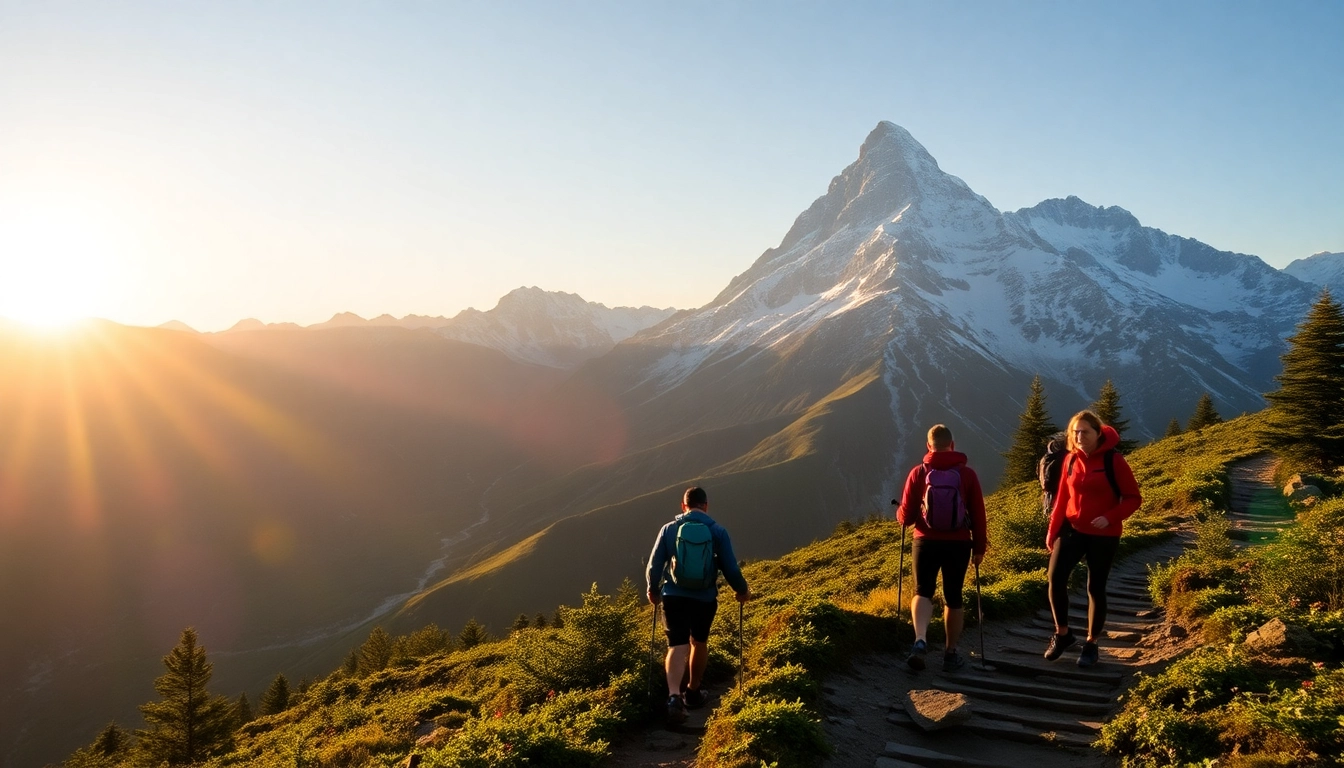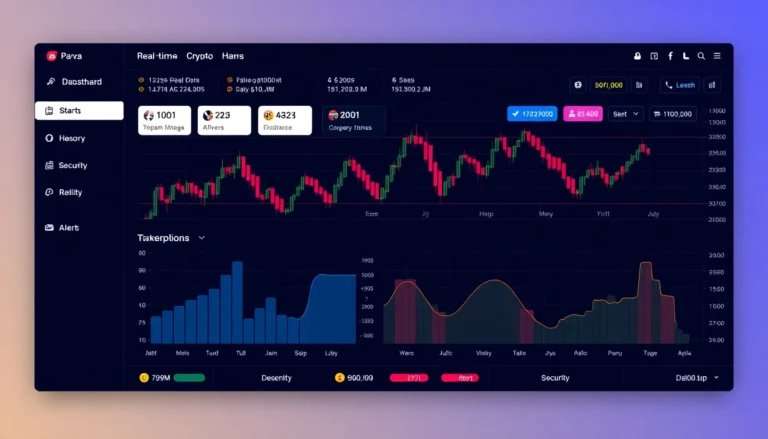Understanding Guided Treks: What Sets Them Apart?
Definition and Key Features of Guided Treks
A guided trek is more than just a journey on foot through scenic landscapes; it is an immersive experience orchestrated by expert guides who provide navigation, interpretation, and safety management throughout the adventure. Defined as a journey undertaken on foot, typically through rugged or natural environments, guided treks are distinguished by their organized structure, often involving small groups led by individuals with extensive local knowledge. These guides serve as both navigators and educators, sharing insights about the flora, fauna, geology, history, and cultural significance of the areas explored.
The key features that set guided treks apart include professionally planned routes, logistical support such as permits, accommodations, and meals, and the presence of experienced guides who ensure safety and enrich the experience. Unlike independent hiking, guided treks often span multiple days, requiring logistical coordination and expert leadership to handle unpredictable terrain, weather changes, and safety concerns.
Benefits of Booking a Guided Trek in Indonesia
Indonesia is renowned for its diverse landscapes, from volcanic mountains to lush rainforests, making it an ideal destination for guided treks. Booking a guided trek here offers numerous advantages:
- Local Expertise: Guides are locals with in-depth knowledge of the terrain, culture, and history, offering authentic insights that enhance your understanding and appreciation of the environment.
- Safety and Security: Navigating Indonesia’s diverse and sometimes challenging terrains, such as volcanic slopes or remote jungle trails, requires experienced leadership to mitigate risks.
- Cultural Connection: Guides facilitate meaningful interactions with local communities, promoting cultural exchange and responsible tourism.
- Convenience and Logistics: Guided treks organize permits, accommodations, meals, and transportation, reducing stress and allowing you to focus on the experience.
- Environmental Responsibility: Reputable guides adhere to sustainable practices, helping preserve the natural beauty and ecological integrity of Indonesia’s landscapes.
For travelers seeking an enriching adventure without the hassles of planning, a guided trek in Indonesia offers a seamless, safe, and culturally immersive experience.
To explore such opportunities, visit guided trek options tailored to diverse interests and fitness levels across the archipelago.
Common Types of Guided Treks Available
The landscape diversity of Indonesia allows for a variety of guided treks catering to different interests and endurance levels:
- Volcano Trekking: Climbing active and dormant volcanoes such as Rinjani on Lombok or Mount Bromo in East Java offers breathtaking views and a sense of achievement.
- Jungle and Rainforest Expeditions: Exploring Sumatra’s rainforests or Kalimantan’s jungles provides opportunities to encounter unique wildlife, including orangutans and exotic birds.
- Cultural and Heritage Walks: Treks that combine natural exploration with visits to traditional villages, temples, and archaeological sites, deepening your understanding of local cultures.
- Multi-Day Wilderness Hikes: Longer excursions in protected national parks like Ujung Kulon or Komodo Islands, designed for experienced trekkers seeking remote and pristine environments.
- Coastal and Island Hikes: Trekking along scenic coastlines and island trails, with opportunities for marine activities such as snorkeling and diving.
Each type offers unique experiences, and guided operators customize these treks based on group interests, weather conditions, and ecological considerations to deliver safe and memorable adventures.
Choosing the Right Guided Trek for Your Style and Skill Level
Guided Treks for Beginners
If you are new to trekking or outdoor adventures, Indonesia’s beginner-friendly guided treks provide manageable routes with less challenging terrain and lower elevation gains. These are often designed to introduce newcomers to trekking, emphasizing safety, comfort, and cultural exposure.
Look for tours that are classified as easy to moderate, typically lasting a day or two, with proper acclimatization breaks and accessible paths. Guides typically provide comprehensive pre-trek briefings, equipment, and support to ensure a smooth experience.
For example, a guided walk around Bali’s scenic rice terraces or a gentle hike through Ubud’s jungle trails offers excellent starting points. These treks build confidence and fitness levels for future, more demanding adventures.
Advanced Guided Trekking Options
For seasoned hikers and adventure seekers, Indonesia offers challenging guided treks that push physical and mental limits. These include multi-day hikes on active volcanoes, remote jungle expeditions, and high-altitude ascents.
Such treks require higher fitness, previous trekking experience, and mental resilience. Guides in this domain are often mountaineering experts, equipped to handle complex navigation, potential altitude sickness, and unpredictable weather. Advanced treks also demand better equipment and preparation.
Examples include the trek to Mount Rinjani’s crater lake, exploring howler monkey habitats in Sumatra, or traversing the expansive forests of Borneo’s Gunung Mulu National Park. These adventures often include overnight camping and expert-led risk management.
Selecting Tours Based on Duration and Difficulty
Effective selection of a guided trek hinges on understanding your available time, physical condition, and experience level. Here are key factors to consider:
- Duration: Ranging from single-day excursions to week-long expeditions. Shorter treks are suitable for beginners, while longer journeys appeal to experienced adventurers seeking immersion.
- Difficulty: Treks are rated from easy, moderate, to strenuous. Carefully evaluate route elevation profiles, terrain types, and expected weather conditions.
- Accommodation Style: Options vary from comfortable lodges to wild camping. Choose based on comfort preferences and experience levels.
Reading detailed itineraries, consulting with operators, and assessing your fitness will help you find a trek aligned with your expectations and capabilities.
Planning Your Guided Trek: Tips and Best Practices
What to Pack for a Guided Trek
Packing smartly is essential for comfort, safety, and convenience. Key items to include are:
- Clothing: Moisture-wicking base layers, insulating mid-layers, waterproof jacket, sturdy hiking boots, and a hat for sun protection.
- Gear: Lightweight backpack, trekking poles, sleeping bag (if camping), headlamp, and a map or GPS device.
- Personal Items: First aid kit, insect repellent, sunscreen, toiletries, and sufficient water and snacks.
- Documentation: Permits, identification, travel insurance, and emergency contacts.
Always check with your guide or tour operator for a comprehensive packing list tailored to your specific trek.
Safety Tips and Preparing Physically
Ensuring safety and preparedness is fundamental. Here are some best practices:
- Physical Conditioning: Engage in cardio, strength, and endurance training prior to your trek, tailored to the difficulty level.
- Health Precautions: Get medical check-ups, update vaccinations, and carry necessary medications, including altitude sickness remedies if applicable.
- Understanding Weather Conditions: Monitor forecasts and prepare for rapid weather changes, especially in mountainous regions.
- Follow Guide Instructions: Listen carefully, adhere to safety protocols, and communicate any concerns immediately.
How to Book and What to Expect During the Trek
Booking a guided trek involves selecting a reputable operator, confirming availability, and understanding the logistic arrangements. Online booking platforms, travel agencies, or direct communication with tour providers are common channels.
Expect a pre-trek briefing covering itinerary, safety procedures, and equipment. During the trek, guides will lead the group, provide insightful commentary, manage pace, and offer support when needed. Embrace the journey with an open mind, and be prepared for physical challenges and cultural exchanges that elevate the experience.
Top Destinations in Indonesia for Guided Treks
Bali and Mount Agung
Bali, famed for its vibrant culture and lush landscapes, also offers compelling trekking opportunities. Mount Agung, an active volcano and the highest point on the island, draws adventurous travelers seeking spiritual and physical achievement. Guided treks here typically start early morning, allowing climbers to witness sunrise from the summit amid breathtaking volcanic vistas.
Lombok and Rinjani Volcano
Rinjani, Indonesia’s second-highest volcano, presents one of the country’s most spectacular trekking experiences. Guided Rinjani treks typically span 2-4 days, taking trekkers through hot springs, crater lakes, and lush forests. Guides provide expert safety management, local cultural insights, and camping support, allowing for a deep connection with nature.
Java’s National Parks and Volcanoes
Java’s volcanic landscape features iconic peaks like Mount Bromo and Mount Semeru. Guided tours often combine sunrise viewing, crater exploration, and visits to surrounding cultural sites such as ancient temples. The diverse terrain offers a range of difficulty levels, suited for both novices and experienced trekkers.
Enhancing Your Trekking Experience: Cultural Insights and Local Guides
Connecting with Local Communities
One of the most enriching aspects of guided treks in Indonesia is the opportunity to interact with local communities. Guides facilitate respectful exchanges, introduce you to traditional customs, and sometimes enable participation in local rituals or craft-making, fostering a deeper appreciation of Indonesian culture.
Respecting Nature and Cultural Etiquette
Responsible trekking involves adhering to environmental and cultural guidelines. Visitors should avoid littering, stay on designated trails, and request permission when photographing locals or sacred sites. Guides educate trekkers on local customs to promote respectful interactions.
Learning from Expert Guides for a Rich Experience
Guides are invaluable sources of knowledge about the biodiversity, geology, and history of Indonesia’s landscapes. Their storytelling transforms a simple hike into an educational journey. Engaging with guides also supports local economies and promotes sustainable tourism.




